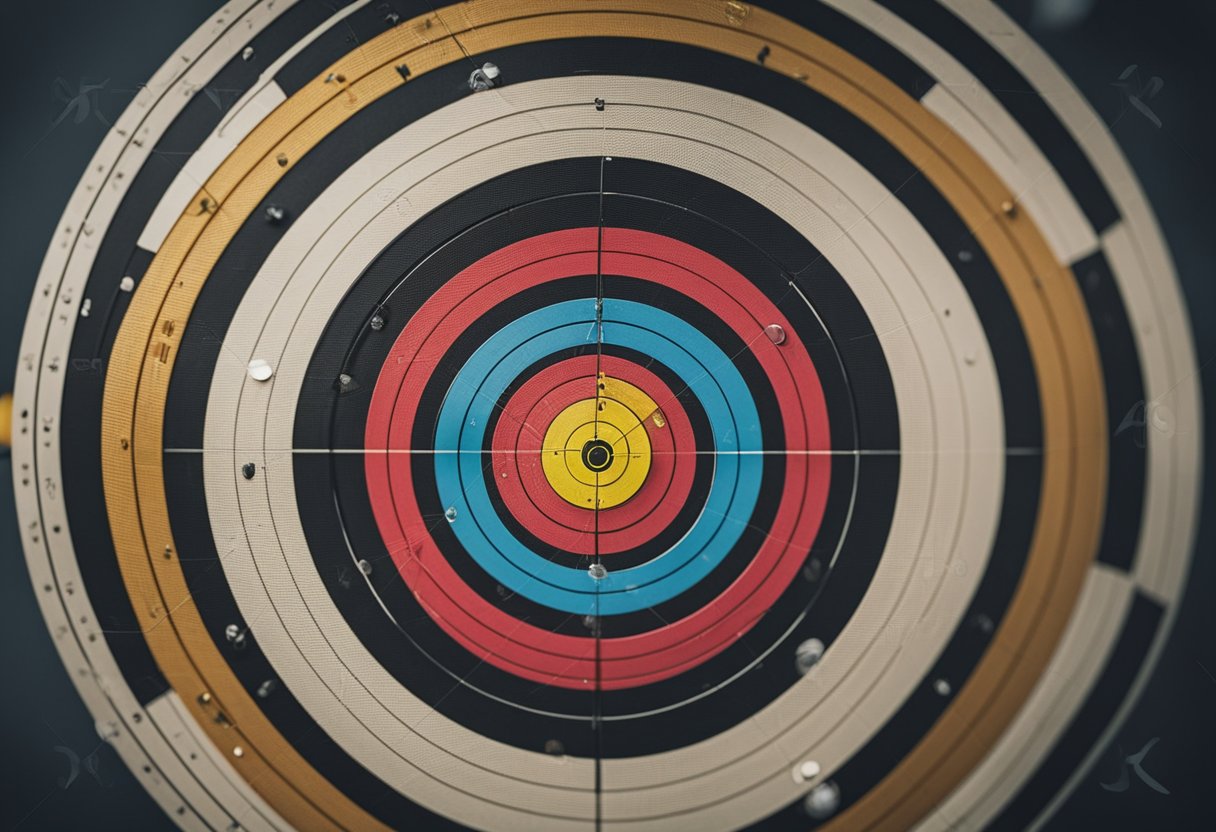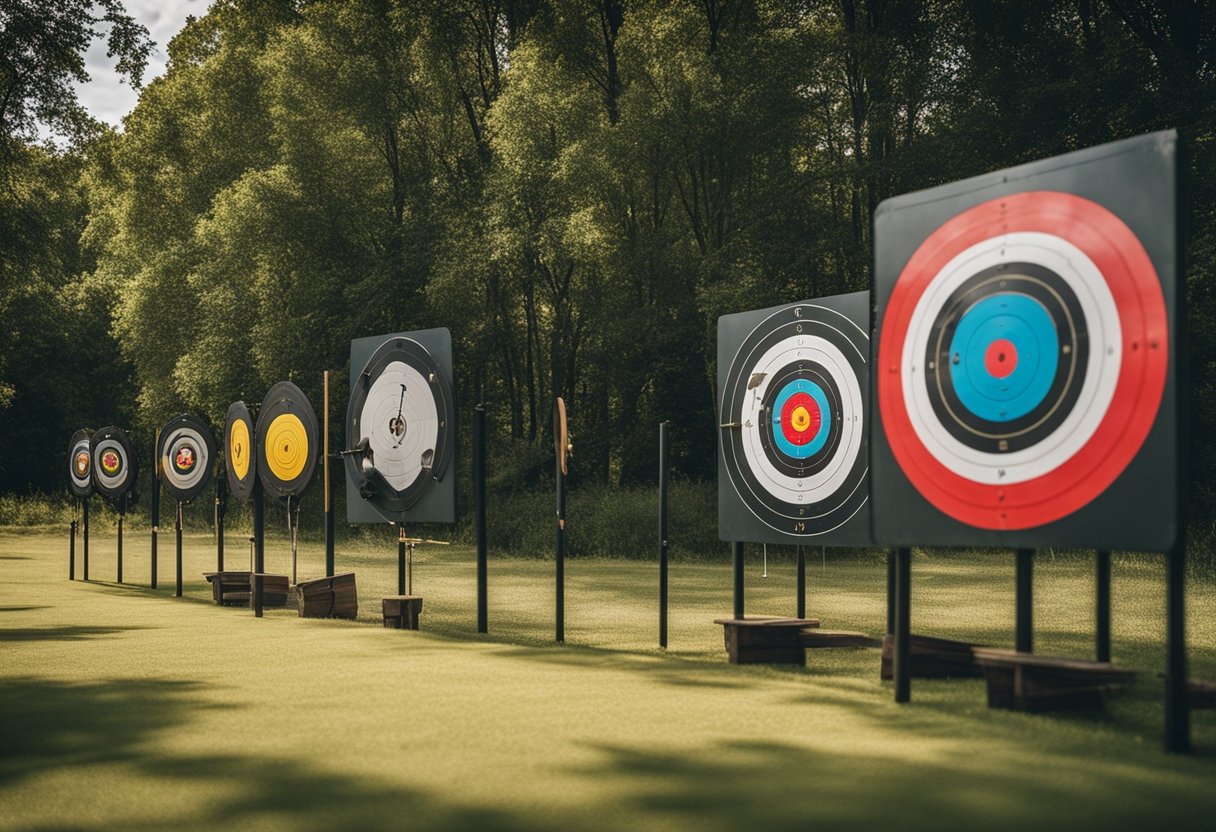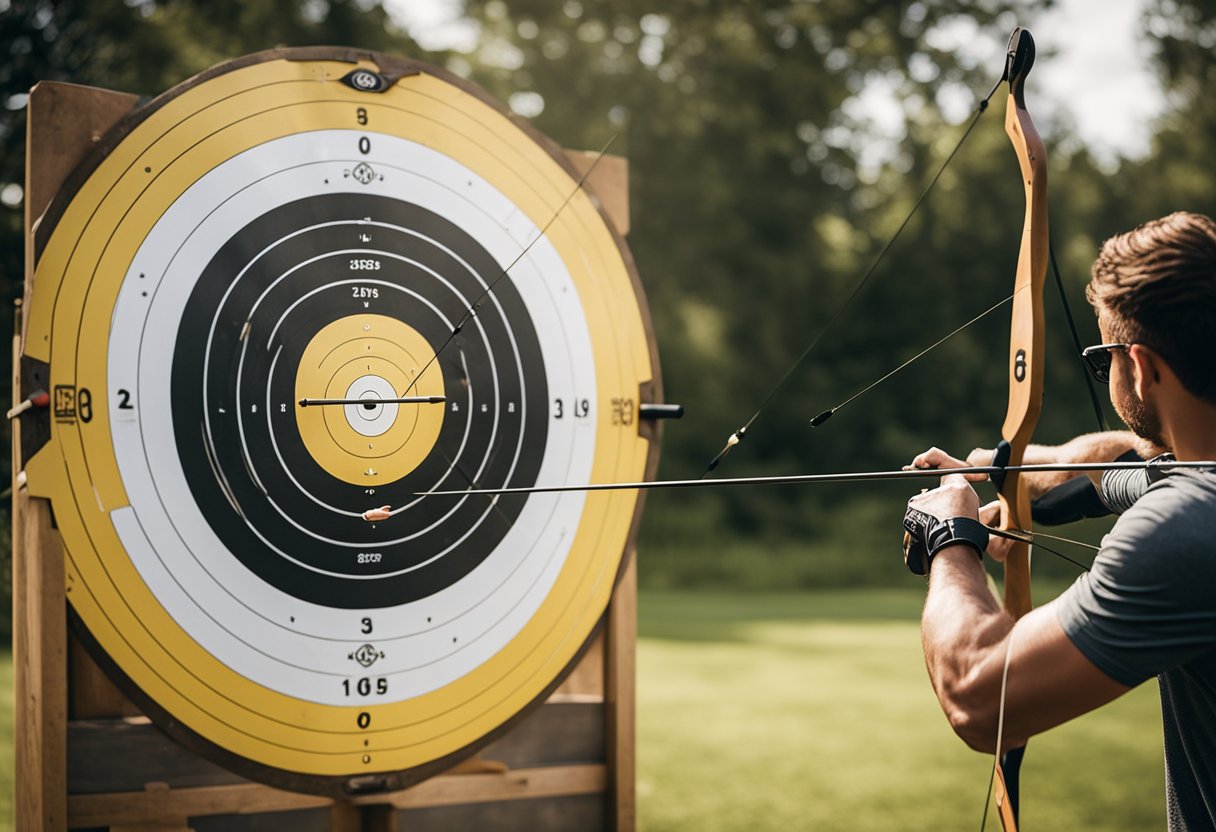Archery targets are essential for practice and competition, but their high cost can be surprising. Their expense is largely due to the need for durability, which allows them to withstand repeated high-impact hits from arrows.
Quality materials used in manufacturing contribute to their longevity and performance, which in turn affects the price.

Moreover, targets are designed to offer the perfect balance between stopping power and ease of arrow retrieval.
These features are crucial for archers who are serious about their practice and require a target that will not only last but also enhance the archery experience. Different targets cater to various archery disciplines and needs, which can also create a range in pricing.
Key Takeaways
- Archery targets are pricey due to high-quality, durable materials.
- Balance between stopping power and arrow retrieval affects cost.
- A range of targets available reflects the diversity of archery needs.
Understanding the High Cost of Archery Targets

To appreciate why archery targets can be a significant investment, you need to consider the specialized materials and construction, the variety of targets available for different archery disciplines, and the practical implications of size and weight.
Materials and Manufacture
Archery targets are designed to withstand repeated high-speed impacts from arrows. The materials used, such as self-healing foam for block targets, are advanced composites that ensure durability and the ability to endure constant use. Bag targets often contain synthetic filler that stops arrows effectively, but these materials can be expensive to produce and assemble.
Specialized Target Types
Targets come in several forms, each with specific purposes and price points. 3D targets simulate game animals and are essential for hunters’ practice; they can be particularly costly due to their realistic details and the need for more complex molds.
Foam targets are valued for indoor ranges and competition settings. They offer ease of arrow removal and longevity, which contribute to their higher cost.
Size and Weight
The dimensions of archery targets correlate directly with their expense. Larger and heavier targets, providing a more generous area for beginners or for long-distance shooting, require more material and thus are more costly.
Their size and weight also add to the shipping costs, which can significantly increase the overall price. For example, a block target with substantial height may be expensive to transport due to its size and the dense materials required for its construction.
- Weight: Heavier targets are both more stable against arrow shots and more expensive.
- Size: Larger targets are priced higher due to the increase in materials.
Each type of target, whether it’s designed for back garden or competitive use, comes with specific features that cater to its purpose but also raise the cost. The end result is a product that supports your archery practice in the best way possible, even if it means a higher price tag.
Factors Affecting Archery Target Price

When considering the purchase of archery targets, it’s important to understand the factors that can influence their price, ensuring that your investment leads to the satisfaction and performance you seek.
1. Quality and Durability
The materials used in the construction of archery targets are paramount in determining both their quality and durability. Targets may be designed from simple foam, which is less durable, to advanced self-healing foam that can withstand numerous shots without significant degradation. Durable targets typically involve a higher upfront cost but can save money over time by reducing the frequency of replacement.
2. Target Longevity
Longevity is another crucial factor affecting price. High-quality materials like self-healing foam contribute to a longer lifespan, offering more value for your money. An investment in a durable target may seem substantial at first glance, but the extended duration between replacements can make it a more cost-efficient choice in the long run.
3. Design for Specific Use
Different types of targets cater to various archery needs and contribute to the price differentiation. For instance:
- Block Targets: Ideal for practice with field tips; they generally have a lower price point.
- 3D Targets: More complex designs resembling game animals, which provide realistic practice for hunters and can be more expensive.
- Targets for Broadheads: Built to endure the harsh impacts of broadhead arrows, these targets are essential for hunting preparation but can be more time-consuming and costly to produce.
Archery Targets Price Influencers
| Feature | Influence on Price | Reason |
|---|---|---|
| Self-Healing Foam | High | Enhances longevity and durability. |
| Complex Designs (e.g., 3D Targets) | High | More intricate to produce, reflecting higher prices. |
| Broadhead Compatibility | High | Requires greater durability, increasing manufacturing costs. |
- Durable materials
- Enhanced longevity
- Specialized use cases
By focusing on these specific aspects, you can make an informed decision on which archery target to select based on its price point and your particular needs.
Comparing Types of Targets

When you’re looking into archery targets, price and durability are key factors. Different types of targets cater to various target practice needs, from casual backyard sessions to rigorous competition training.
Bag vs. Block vs. 3D Targets
Bag Targets are typically filled with synthetic material, making them ideal for easy arrow removal and repeated use. They’re affordable and a great choice for beginners. However, they might not withstand the heavier draw weights of some bows. A popular example is the Delta McKenzie Big 8, known for its durability and weather resistance.
Block Targets are made from high-density foam, designed to stop arrows with friction, not force. These targets can be more expensive, but they’re long-lasting and can handle a range of draw weights and arrow types.
- Advantages:
- Easy to transport
- Suitable for broadheads and field tips
- Self-healing properties extend lifespan
3D Targets provide a realistic hunting practice experience, replicating animal shapes and vital areas. While they offer the most realistic scenario for hunters, these targets can be the most expensive due to their intricate designs and detail.
- Advantages:
- Realistic practice for hunters
- Improved aiming and shot placement
- Fun and engaging for different skill levels
Alternative Target Solutions
For archers on a budget or those just looking for temporary solutions, there are alternatives:
- Cardboard: Inexpensive and accessible, cardboard can serve as a makeshift target face for short-term use.
- Hay Bales: Another cost-effective option, hay bales can stop arrows effectively if stacked densely. They are, however, less durable and not ideal for high-power bows.
- Styrofoam: Lightweight and cheap, styrofoam can be used for DIY targets but lacks the stopping power and durability of specialized targets.
These alternatives can be sufficient for occasional target practice but generally do not offer the longevity or the performance of bag, block, or 3D targets.
Improving Archery Through Quality Targets

High-quality archery targets are pivotal for honing your skills and ensuring you can practice efficiently and effectively.
Target Practice and Skill Development
To develop your archery skills, consistent target practice is essential. Targets with substantial stopping power are key to accurately simulate real-life conditions, offering resistance akin to what you would experience when hunting.
Utilizing a durable target allows you to focus on improving accuracy and confidence, two crucial elements of archery. Targets designed for maximum durability not only stop an arrow effectively but also ensure a longer lifespan, giving you ample time for practice without frequent replacements.
- Durability: A durable archery target withstands numerous shots and extreme weather conditions.
- Stopping Power: Efficient targets prevent arrow pass-through, securing the arrows safely and allowing for easy retrieval.
Investing in a Home Archery Range
Investing in an at-home archery range is a major commitment, but it can be incredibly rewarding. Having the convenience of practicing at any time can accelerate your learning curve.
Moreover, the investment in high-quality targets is justified by the longevity and performance improvement they bring. When selecting targets, prioritize those that offer the most return on investment in terms of durability and performance.
- Investment: Consider the target as an investment in your archery journey—choosing the right one can make all the difference.
- Performance: A better target will lead to better practice sessions, directly impacting your performance positively.
By choosing the right targets for your home range, you lay the groundwork for a solid practice environment where you can grow as an archer.
Archery Target Maintenance and Care for Long-Term Use
Proper maintenance and care are crucial to extend the durability and resistance of archery targets, making them more cost-efficient in the long run. Your archery targets require consistent attention to maintain their integrity and performance. Here are some key steps you should follow:
- Rotate Your Target: Rotating your target regularly helps distribute wear evenly, preventing premature breakdown in one area. This method can substantially prolong the target’s usable life.
- Regular Inspection:
- Check for signs of wear and tear.
- Look for loose or damaged parts.
- Repair minor issues promptly to avoid further damage.
- Clean Carefully: Keeping your target clean can prevent materials from degrading. However, avoid harsh chemicals that can weaken the target’s structure.
- Storage Tips: Store your target in a dry, cool place to fend off moisture and heat that can degrade materials.
- Avoiding Prolonged Sun Exposure: Excessive sunlight can cause the material to fade and weaken.
- Proper Arrow Removal: Pulling arrows out correctly can prevent unnecessary strain and potential tearing of the target. Investing in an arrow puller can be beneficial.
By implementing these practices, you can ensure that your investment in a high-quality archery target is worthwhile, ultimately providing better value through its extended lifespan. Discover strategies to increase the lifespan of your archery targets for more detailed guidance.
